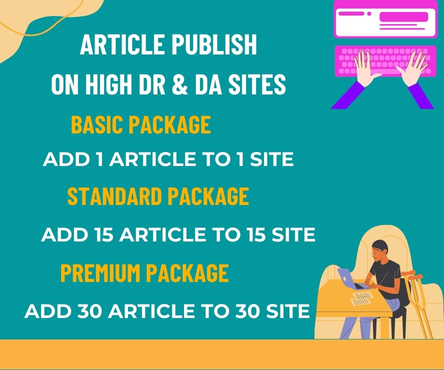In the realm of web design, wireframes serve as a crucial element in the planning and development process. They act as the foundational blueprint for a website, outlining its structure, functionality, and user interface without the distraction of visual design elements. This article delves into the significance of wireframes in web design planning, exploring their benefits, types, and best practices. https://weddingphotographerwebdesign.com/
Understanding Wireframes
Wireframes are visual representations of a website’s layout, typically created in the early stages of the design process. They can range from simple sketches on paper to detailed digital mockups. The primary purpose of wireframes is to establish the basic structure of a webpage, including the placement of elements such as headers, footers, navigation menus, content areas, and interactive features.
Key Components of Wireframes
- Structure: Wireframes define the overall layout of a webpage, illustrating how different elements are organized and how they relate to one another.
- Functionality: They outline the intended functionality of various components, such as buttons, forms, and links, helping to clarify how users will interact with the site.
- Content Hierarchy: Wireframes help establish a clear hierarchy of information, guiding users through the content in a logical manner.
Benefits of Using Wireframes
1. Improved Communication
Wireframes serve as a common language between designers, developers, and stakeholders. By providing a visual representation of the website’s structure, they facilitate discussions and ensure that everyone involved has a clear understanding of the project. This clarity helps to align expectations and reduces the likelihood of misunderstandings.
2. Early Feedback and Iteration
Creating wireframes allows designers to gather feedback early in the design process. Stakeholders can review the wireframes and provide input on the layout and functionality before any coding or visual design begins. This iterative approach enables designers to make necessary adjustments based on feedback, ultimately leading to a more refined final product.
3. Focus on User Experience
Wireframes prioritize user experience by allowing designers to map out the user journey and identify potential usability issues. By simulating user interactions, designers can assess how easily users can navigate the site and access the information they need. This focus on usability is essential for creating a website that effectively meets the needs of its target audience.
4. Cost and Time Efficiency
Investing time in wireframing can save both time and money in the long run. By identifying and addressing issues early in the design process, teams can avoid costly changes during development. Wireframes help streamline the design process, allowing for quicker iterations and a more efficient workflow.
Types of Wireframes
Wireframes can be categorized into different fidelity levels, each serving distinct purposes:
1. Low-Fidelity Wireframes
Low-fidelity wireframes are simple sketches or basic digital representations that focus on layout and structure rather than details. They are quick to create and ideal for brainstorming sessions, allowing designers to explore multiple concepts without getting bogged down in specifics. These wireframes are often used in the initial stages of the design process to generate ideas and gather feedback.
2. High-Fidelity Wireframes
High-fidelity wireframes provide a more detailed and polished representation of the final product. They include specific content, functionality, and design elements, making them useful for presenting to clients and guiding developers during implementation. High-fidelity wireframes help stakeholders visualize the end product more accurately and facilitate discussions about design choices.
3. Interactive Wireframes
Interactive wireframes take the concept a step further by allowing users to click through the wireframe and experience the intended functionality. These wireframes simulate user interactions, providing a more realistic representation of how the final website will operate. Interactive wireframes are particularly valuable for usability testing and gathering feedback on user flows.
Best Practices for Creating Wireframes
To maximize the effectiveness of wireframes, designers should consider the following best practices:
1. Keep It Simple
Wireframes should focus on layout and functionality rather than visual design. Avoid adding colors, images, or intricate details that may distract from the primary purpose of the wireframe.
2. Use Annotations
Adding annotations to wireframes can provide context and clarify the intended functionality of specific elements. This is especially helpful for stakeholders who may not be familiar with design terminology.
3. Prioritize User Needs
Always keep the target audience in mind when creating wireframes. Consider their needs, preferences, and behaviors to ensure that the design effectively addresses their requirements.
4. Iterate and Refine
Wireframing is an iterative process. Be open to feedback and willing to make changes based on input from stakeholders and users. Regularly revisiting and refining wireframes can lead to a more successful final product.
5. Collaborate with Team Members
Involve team members from different disciplines, such as developers and marketers, in the wireframing process. Their insights can provide valuable perspectives and contribute to a more well-rounded design.
Conclusion
Wireframes are an integral part of web design planning, providing a structured approach to developing user-friendly websites. They enhance communication among team members, facilitate early feedback, and focus on user experience, ultimately leading to a more effective final product. By understanding the different types of wireframes and adhering to best practices, designers can create a solid foundation for successful web projects. Investing time in wireframing not only streamlines the design process but also ensures that the end result aligns with both user needs and business objectives. Embracing wireframes as a vital tool in the design toolkit can significantly improve the overall quality and effectiveness of web design efforts.

